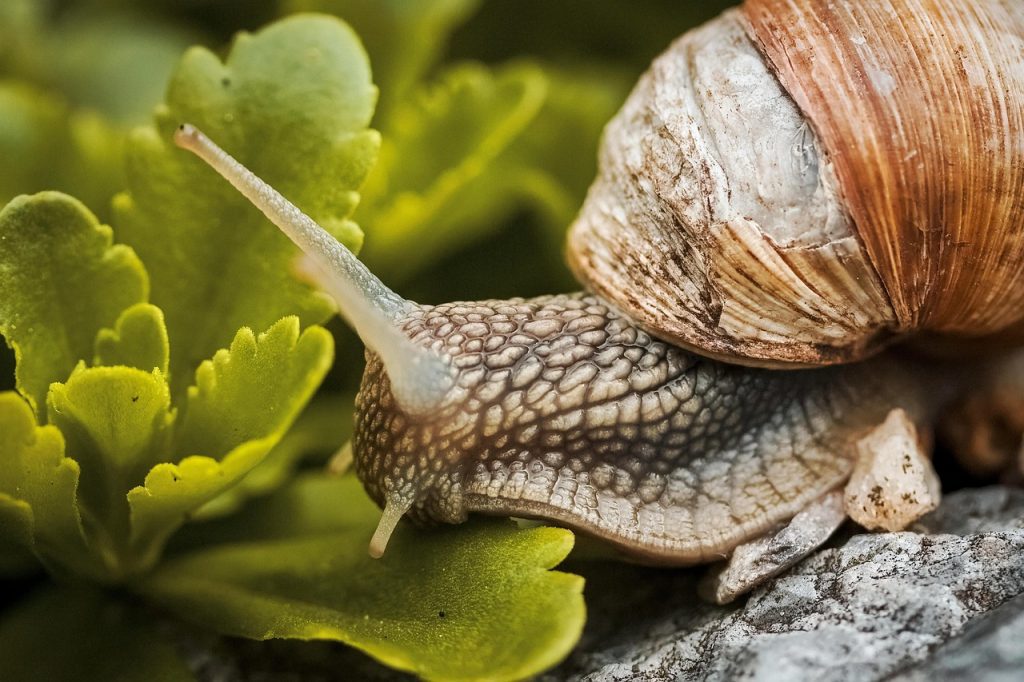If you’re wondering what to feed your slimy little friends and how to do it right, you’re in the perfect place.
I’ve spent years raising snails – both land and aquatic – and trust me, their diet makes all the difference.
Get it right, and you’ll see vibrant shells, high energy, and longer lifespans. Get it wrong, and… well, let’s not go there.
In this guide, I’ll break down exactly what I feed my snails, how I prepare it, and the little tricks I’ve learned to keep them thriving.
Are Snails Herbivores, Omnivores, or Detritivores?
- Land snails (like garden snails and GALS) are mostly herbivores but occasionally need protein.
- Aquatic snails (like mystery or nerite snails) are often omnivores or algae-eaters, sometimes scavenging for leftover fish food.
- Some snails are detritivores, that is, they munch on decaying plant matter, but that doesn’t mean they should only eat rotting scraps.
Essential Nutrients for Healthy Snails
- Calcium – Non-negotiable for strong shells. Without it, shells become brittle and deformed.
- Protein – Needed in small amounts for growth and repair (especially for young snails).
- Fiber – Keeps their digestion smooth (think leafy greens).
- Vitamins & Minerals – Variety is key. Different veggies = balanced nutrition.
What I Feed My Snails – The Perfect Snail Diet
Here’s exactly what goes into my snails’ meals, categorized for easy reference.
– Staple Foods (Daily/Regular Diet):
These are the go-to foods my snails eat most often:
- Vegetables:
- Cucumber (a snail favorite, but low in nutrients—use in moderation)
- Zucchini (soft, easy to eat, packed with vitamins)
- Sweet potato (lightly boiled for easier chewing)
- Carrots (rich in beta-carotene)
- Leafy Greens:
-
- Romaine lettuce (high water content, easy to digest)
- Kale (calcium-rich, but don’t overdo it as oxalates can bind calcium)
- Dandelion greens (wild-harvested, pesticide-free only)
- Fruits (Occasional Treats):
- Apple (remove seeds as they contain cyanide)
- Banana (soft and easy to eat, but sugary)
- Melon (hydrating, but feed sparingly)
Avoid citrus (too acidic) and high-sugar fruits (can cause mold).
– Calcium Sources (A Must for Strong Shells)
- Cuttlebone – The gold standard. Just drop it in their enclosure.
- Eggshells – Boil, dry, and crush into powder. Sprinkle on food.
- Oyster grit – Great for larger snails.
– Protein Boosters (For Growth & Repair)
- Fish flakes (soaked in water to soften)
- Bloodworms (for aquatic snails)
- Boiled egg (tiny bits, once a week max)
Young snails need more protein and adults only need it once a week.
– Foods to Avoid:
- Salty foods (snails hate salt, it dehydrates them)
- Processed foods (bread, pasta have no nutritional value)
- Onions and garlic (toxic to many invertebrates)
- Citrus fruits (too acidic and can harm their digestive system)
How I Prepare & Serve Snail Food
You can’t just toss a whole cucumber in and call it a day.
Here’s how I get their meals ready.
1. Washing (Removing Pesticides):
Always rinse veggies thoroughly as even organic produce can have residues.
Soak leafy greens in water + a bit of vinegar to remove contaminants.
2. Cutting and Peeling:
Soft veggies (like zucchini) can be sliced thin while hard veggies (like carrots) should be lightly steamed or grated.
Peeling is optional, but reduces pesticide risk.
3. Raw vs. Cooked:
Most veggies are best raw.
Hard veggies (sweet potato, pumpkin) benefit from light steaming.
Never feed fried or seasoned food, keep it natural.
4. Feeding Methods:
- Land snails: Place food on a shallow dish to avoid soil contamination.
- Aquatic snails: Use a feeding clip to keep food from floating away.
Remove uneaten food within 24 hours to prevent mold.
How Often Should You Feed Snails?
- Adult land snails: Every 1-2 days (they eat slowly).
- Baby snails: Daily (they’re growing fast).
- Aquatic snails: Small portions daily (they graze on algae too).
Portion Control
A slice of zucchini or a few leaves of lettuce per snail is enough.
Observe their eating habits. If food is left after 24 hours, reduce the amount.
Snails are nocturnal. They prefer eating in the dark. I feed mine in the evening so they have all night to munch.
How To Tell If Your Feeding Routine Is Working
A well-fed snail is an active snail. Here’s how to tell if your feeding routine is working.
- Strong, smooth shell growth (no cracks or pits).
- Active movement (snails exploring, climbing, eating eagerly).
- Regular poop (yes, I check! It should be dark and well-formed).
– Red Flags (Time to Adjust Diet)
- Food untouched → Maybe they don’t like it, try a different veggie.
- Shell erosion → Up calcium immediately (cuttlebone 24/7).
- Lethargy → Could be dehydration or poor nutrition.
Bottom Line
Feeding snails isn’t complicated but it does need attention. Stick to fresh, varied foods, keep calcium available, and watch how they respond.
Here’s the biggest takeaway:
- Variety is key – Rotate their diet to cover all nutritional needs.
- Calcium is non-negotiable – Weak shells mean unhappy snails.
- Observe and adapt – If they ignore a food, try something else.
- Less is more – Overfeeding leads to mold and pests.
Every snail has preferences. Some go crazy for sweet potato, while others only want cucumber (mine go crazy for zucchini but ignore carrots).
The fun part is figuring out what your snails love best.
